Scott joined the SEAKR team as the Manager of Radiation Effects in 2015 after obtaining his PhD in Aerospace Engineering from CU Boulder. However, prior to joining the workforce he – like many other SEAKR employees – served his country. As a Nuclear Submarine Officer in the U.S. Navy, the education Scott received helped to elevate his career in the future. “I joined [the Navy] because I wanted to be an astronaut,” said Scott Washburn simply.

Former Nuclear Submarine Officer, Scott Washburn.
“Of course I wanted to serve my country in some form or fashion so I started looking around. I first looked at becoming a pilot. However, I wore glasses back then and at the time – 1999 – the services allowed Lasik but NASA didn’t. I didn’t want to get Lasik and then eventually give myself a long term disqualification. I looked everywhere and I actually didn’t think about submarines very much,” Scott stated.
“I got a postcard in the mail one day that said ‘hey would you like to serve your country and use your engineering skills to be a submarine officer. I thought ‘yeah that actually sounds cool’. At the time there had never been a submariner astronaut before. I thought this is a great analog because you’ve got this confined isolated environment experience and that would translate really well to being an astronaut on a shuttle or a space station. I signed up in 1999 and in 2000 they picked up their first ever submariner astronaut, Capt. Bowen.”
His time in the Navy proved well spent as he later applied his nuclear engineering background in the aerospace industry.
“It gave me all of the nuclear and radiation background that I use. That is how I worked my way into this field. I was really passionate about the space industry and I had this great nuclear background so I ended up getting into radiation effects, which I thought was a great way to merge my nuclear and aerospace backgrounds.”
Scott’s passion for aerospace began with his lifelong dream of becoming an astronaut, which undoubtedly takes a lot of hard work.

Scott exploring the shuttle trainer while at the Johnson Space Center in Houston.
“NASA is looking for a broad set of skills. Getting to that point has been a lifelong ambition of mine and I have been building up my skill set along the way. One is your primary career – [NASA] wants people who are good at their jobs and have some relation to space or exploration. There are additional skills that help you stand out too,” explained Scott. “I went and learned how to scuba dive and got my private pilot’s license and did all these other things to build up my resume so I would be interesting to them as an astronaut candidate.”
His first attempt at becoming an astronaut in 2009 was fruitless. However, his second application got him into the highly qualified group. And during the most recent application opportunity in 2016, Scott made it to the finalist selection group, beating out nearly 18,300 other applicants and landing among the top 50 candidates to potentially go into space.
“Basically, how they do it is they take all their applicants and filter it down to 300-500 people they want to take a closer look at – the highly qualified. Then they pick 120 people, the semi-finalists. These people go to the Johnson Space Center in Houston for a three day interview. It’s nothing too crazy. Basic screenings and fancy physicals and you get to meet the astronauts and chat with them. Then it is 50 minutes in a room with the selection board. That is a little weird because you are sitting across the table from all of your heroes and just thinking ‘ok this is intimidating’. The selection board is made up of primarily active astronauts,” Scott explained.
“After that you make it to the finalist round, which is the top 50. Those 50 come in for a week long interview, which involves a whole slew of procedures and an in depth medical screening, which is one of the biggest fears for any astronaut applicant because they look for stuff you might not know about. You might have a small hole in your heart that allows blood to pass through different chambers when it is not supposed to. Most people don’t even know that they have it but you can’t have it as an astronaut. You’re basically crossing your fingers that nothing is wrong with you. You walk out of the ultrasound office and everyone is either cheering or has their heads down. Thankfully no heads down in my group,” Scott recalled.

Scott sitting in a T-38 during his interview week at the Johnson Space Center.
As Scott reflects on the entire process – interviewing, meeting his heroes, and making it as far as he did – a smile spreads across his face.
“At the very least, I got the world’s most ridiculously clean bill of health! It did feel surreal though. You have to couch your expectations because it is such a crazy goal. Although one of the cool things about being with that group of people was you get to just geek out. We all had the same dream our whole lives and dedicated our whole lives to it.”
Unfortunately, Scott did not get chosen to become an astronaut. However, the next round is in 2020 and Scott is not giving up.
“I am gearing up for getting another shot four years from now,” Scott said, knocking on wood.



